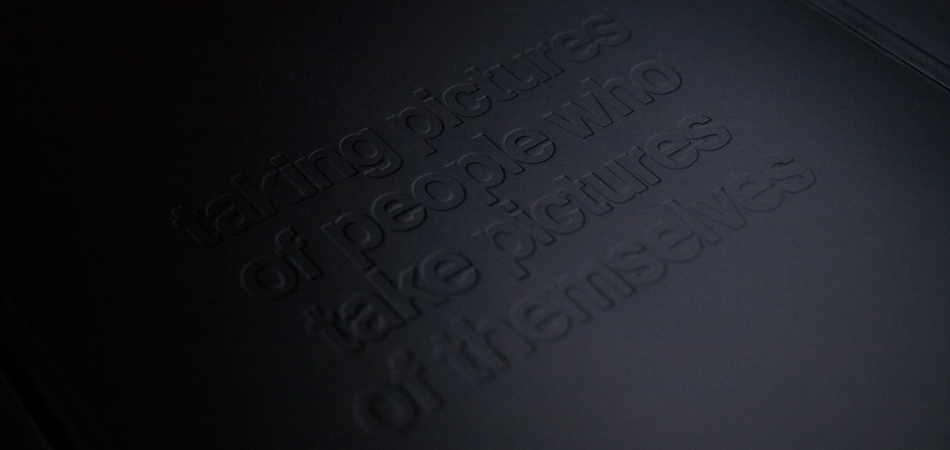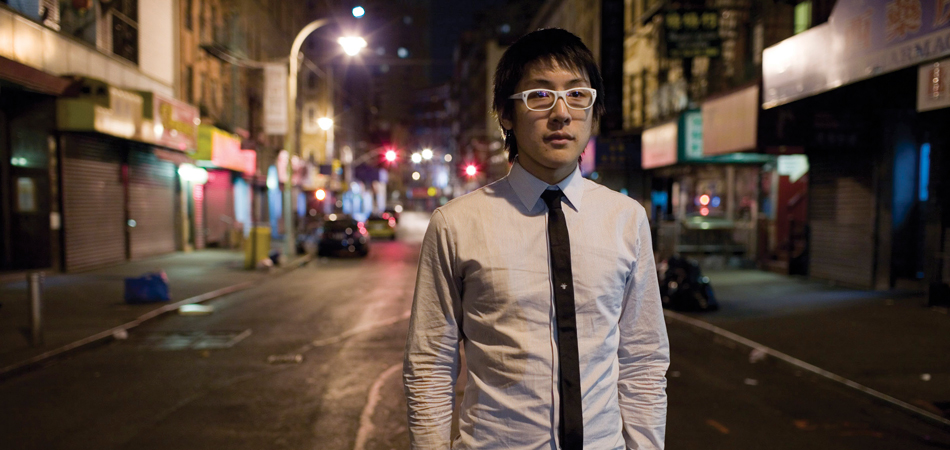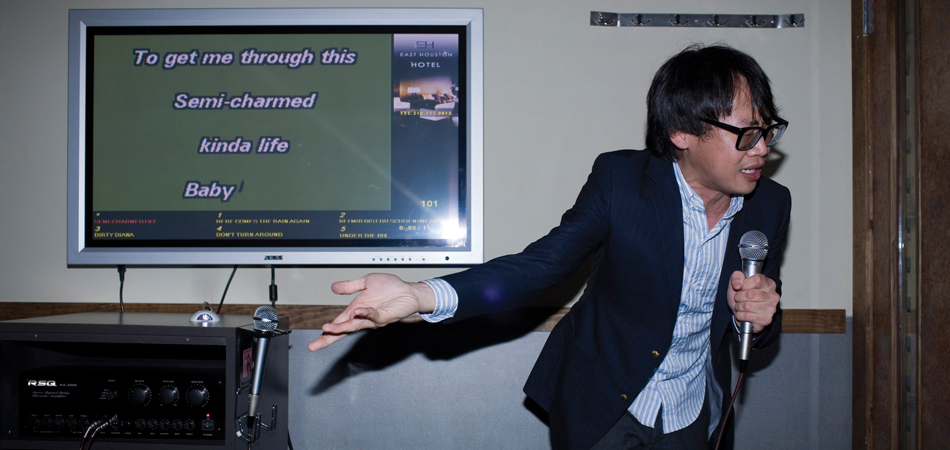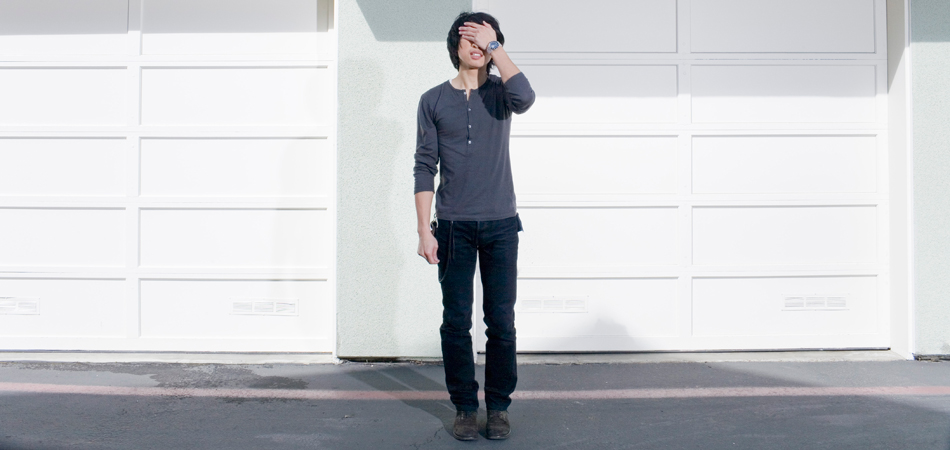Sidney Lo: Taking Pictures Of People Who Take Pictures Of Themselves
We catch up with photographer Sidney Lo to gain a better understanding into his new book, Taking Pictures Of People Who Take Pictures Of Themselves. Any fans of WDYWT threads will surely enjoy this one!

A quick gander around any online fashion-based community and inevitably a stop into the “general” section of the forum will yield each respective platform’s very own “What Did You Wear Today” thread. Rapidly becoming a spawning ground for Internet stardom among other mundane interactions including the good ol’ flaming, photographer Sidney Lo has taken the next step in combining what is largely an online phenomenon into an offline and tangible piece of visuals. His recently released book “Taking Pictures Of People Who Take Pictures of Themselves.” is an ironic look at showcasing many personalities that proliferate the online WDYWT threads of the popular fashion community, Superfuture. With the release of the book, the concept has now been taken offline and off computer screens. In the following interview, we speak with Sidney about his ideas regarding the creation of the book, the Superfuture community itself and of course the WDYWT movement and what it represents.
Interview: Eugene Kan

Interview with Sidney Lo
Could you explain the whole project?
It’s a portrait series of 79 users in the Superfuture community developed into a book titled “Taking Pictures Of People Who Take Pictures Of Themselves.” — most of them participate (or have participated) in the “what are you wearing today?” thread where users post pictures, often times daily, of their outfits. The idea is to use the heavily favored streetstyle aesthetic and contrast it with the avatars behind the virtual communities that support the fashion industry. This monograph has a lot of quirky online personas mixed with real identities and maybe even something stylish as well.
Who was all involved in the production of the book?
Nearly every contribution was provided by a Superfuture user; I consulted with Superfuture-related folks who worked in print and advertising. There was also an 8-bit video game graphic created a couple years ago that was licensed for this book — it was created by an elusive graphic designer somewhere in Sweden or something. I also had friends and family copy-edit the foreword and afterword. A majority of the book, however, was a solo endeavor.
For newcomers to the Superfuture community, it can be a harrowing experience due to the bluntness and brutal honesty. How would you describe Superfuture and what sets it apart from other online forums and communities?
Come for the denim, stay for the (super)trash. Superfuture is a harsh world of keyboard warriors with a lot of shit-talking in the trash sub-forum (and I use “trash” in the most complimentary way possible). The message board seems to differ from other communities because the larger site itself doesn’t cater to a specific item of obsession or trend; it’s primarily a shopper’s travel guide. Some specific niches have come from the community, though, like the superdenim resource — it’s by far one of the most comprehensive denim encyclopedias on the Internet. Over the years the trends have changed and Superfuture has been able to handle the newcomers. They had a strong streetwear phase earlier on (and to an extent still do), put Japanese denim on the forefront, and now have a mix of high-fashion and Americana (…er workwear?) enthusiasts. The lack of a particular theme to Superfuture allows malleability in its user-generated content.

You’re originally from the West Coast as I understand but a lot of your formative years were spent in New York, how did the differences in the East and West Coast play into your creative process? How did your relationship with Kiya of Selfedge develop as I’ve seen you both support one another?
I studied for my bachelor’s in New York. Those four years were enlightening, but if not for the difference in location, then for freedom and independence post-high school. I just met tons of really cool people and a lot of them taught me invaluable lessons and took me under their wing; meeting so many different people in various industries and gleaning from their experiences gave me more perspective in what I wanted to create as a photographer.
I started working with Kiya shortly after I started my year-long “what are you wearing today” project in March of 2007. I bought a pair of Flat Head 3001’s from Self Edge at the Self Edge x Superfuture party in January of 2007, and once word got out that my project was going to be utilizing those jeans, it was no-brainer. Luckily the project gained some clout amongst people on the message boards and since then, I’ve been fortunate enough to have been a peripheral contributor to Self Edge.
What were you the greatest experiences putting together your own book? What was the most difficult aspect?
Everything from daily visits to the printer, layouts, setting up my own company — all of it was an invaluable learning experience. The largest caveat is that none of this involves actual photography. When I underwent pre-production in late-September 2009, I didn’t use my camera for months. Now that this project’s been completed, I have a greater appreciation for anyone out there making a living doing their own shit. I’m slowly reconciling with the notion that doing photography might not always involve taking pictures.
The whole notion of WDYWT has been a familiar one for you including your own 365-day documented experience. What is your fascination with WDYWT and its increasing presence in popular culture?
We’re at the point now where — obviously I’m lacking empirical evidence so just indulge with me for a moment — we’re doing the most self-documentation in the history of, well, humanity. Most folks have mobile phones with cameras. We’ve got Twitter, Facebook, MySpace, and hundreds, if not thousands, of other means to distribute information about ourselves. There is no privacy if you choose to be online.
I’m enamored by our voluntary participation in all of this. It’s not only shaping the way we communicate, but also the media-based industries that are being undermined by these new technologies. Professional photography definitely hasn’t been the same since digital cameras became commonplace.

Do you think your background and interest in photography facilitated your use of the WDYWT medium?
Maybe. Anyone could have done my 365-day WDYWT project; it’s not difficult at all to reproduce. I may have had an edge in figuring out the subtext to the history of self-portraiture work, though. Artists like Tehching Hsieh did this sort of time-lapse work before it was convenient and kitschy.
Why do you think WDYWT-type photography and documentation has been so increasingly popular?
WDYWT is a response to a few basic things: the Internet and digital photography. You’ve got people in bumblefuck nowhere who now have access to things only metropolitan city kids used to know about — that in itself is a very powerful thing. High-fashion and esoteric brands have crossed over into the general populace. The collective response to this new information is to share it with others, often times in the form of self-documentation.
Do you think popularity and “Internet” fame is more associated with repetition, photo quality or actual good outfits?
Internet fame is worthless if you can’t use it to do something.

What do you have planned for the launch of the book?
Self Edge just had a ridiculous party this past Saturday, May 1st. Custom photobooth, cupcake caravan, and lots of booze – it was a really fun time.
The book is on sale now at both Self Edge San Francisco and New York locations, and my website.
There will be a book release at Azalea SF on May 13th, from 6pm – 9pm. Free booze, loud hipster music, and fashion clothing sales. Come through, show your support, and say hi!
Do you find it an interesting relationship taking something that is inherently only available online and bringing it offline via a printed book?
This is the big experiment — I want to see if I can transfer what I do on the Internet into real life. There are quite a few people, who are featured in this book, getting a lot of things done beyond message boards; they’re amassing their own legion of fans and receiving a lot of attention from established websites and print magazines. The scary bit is creating something like this without any sample surveys or ideas of what people want to buy; I’m putting together a product that’s driven by my own interests and throwing it out there into the ether in hopes that people will be receptive to it. The translation is definitely an odd one, but the online audience is massive and there is a definite possibility for crossover success.
Arguably you have accrued a decent amount of “Internet Fame”, your foot is essentially in the door to expand into other projects, what do you have in the pipeline or what would you like to accomplish?
I would argue that you’re way more “Internet Famous” than I am. (Ha!) I still have a long way to go.
I’d like to create more personal work, develop my own aesthetic, and start projects with some of the talented folks I’ve met through the message boards. If I could make a half-way decent living taking pictures for the rest of my life, I’ll be a happy camper. Oh yeah, I’d like to eventually pay off my student loans, too.
“Taking Pictures Of People Who Take Pictures Of Themselves.” is available now through SidneyLo.com/Book with a retail price of $35 USD plus shipping.
